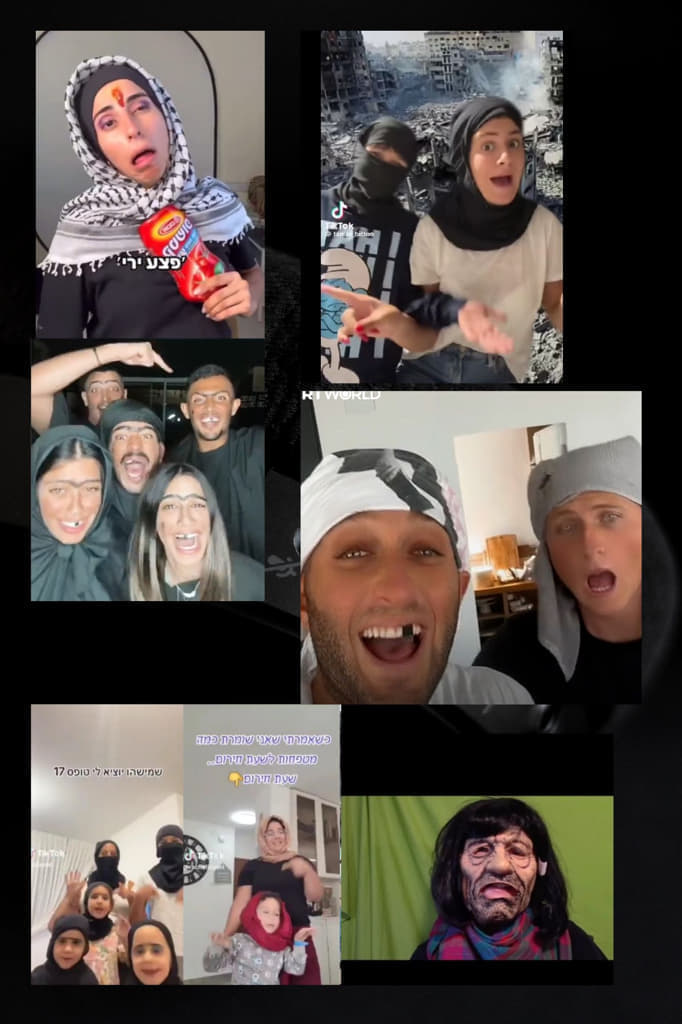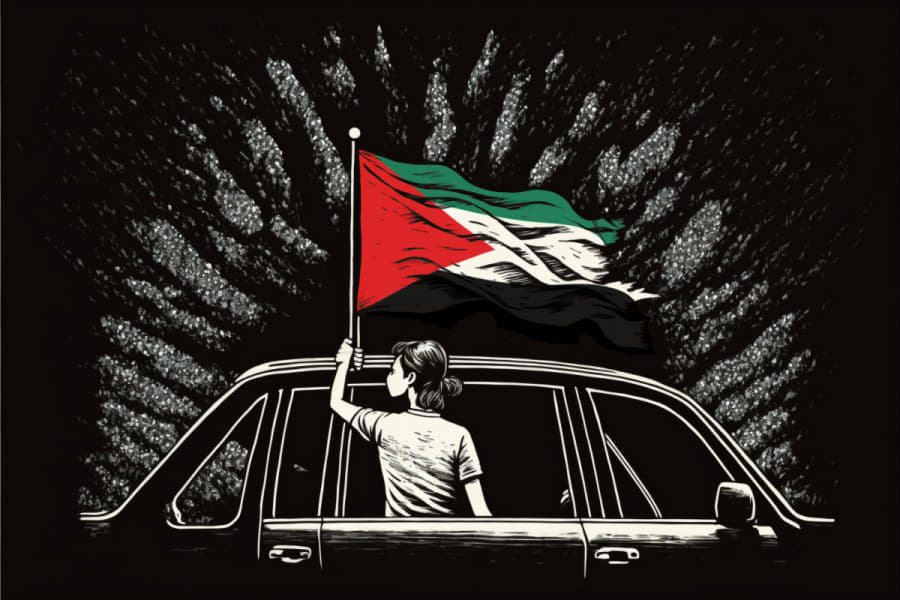When Zionist militias, using advanced Western arms, conquered historic Palestine in 1947-48, they expressed their victory through the deliberate humiliation of Palestinians.
Much of that humiliation targeted women, in particular, knowing how the dishonor of Palestinian females represents, according to Arab culture, a sense of dishonor to the whole community.
This strategy remains in use to this day.
When scores of Palestinian women were released following prisoner exchanges between the Palestinian Resistance and Israel, starting on November 24, there was very little room to hide the facts.
Unlike the 75-year-ago Palestinian community, this current generation no longer internalizes Israel’s intentional humiliation of women and men alike, as if an act of collective dishonor.
This has allowed many newly released female prisoners to speak openly, often on live TV, about the kind of humiliation that they were exposed to while in Israeli military detention.
The Israeli army, however, continues to act with the same old mindset, perceiving the humiliation of Palestinians as an expression of dominance, power and supremacy.
Over the years, Israel has perfected the politics of humiliation – a notion that is predicated on the psychological power of shaming whole collectives to emphasize the asymmetrical relationship between two groups of people: in this case, the occupier and the occupied.
This is precisely why, in the early days of the Israeli war on Gaza, Israel detained all Palestinian workers from the Strip who happened to be working inside Israel as cheap laborers at the time of the October 7 operation.
The dehumanization they experienced at the hands of Israeli soldiers demonstrated a growing trend among Israelis to degrade Palestinians for no reason whatsoever.
One of the worst documented episodes took place on October 12, when a group of Israeli soldiers and settlers assaulted three Palestinian activists in the West Bank. Israeli newspapers Haaretz and The Times of Israel described how the three were assaulted, stripped naked, bound, photographed, tortured and urinated upon.
Those images were still fresh in the minds of Palestinians when new images emerged from northern Gaza.
Photos and videos published in Israeli media showed men stripped down to their underwear, being placed in large numbers on the streets of Gaza, while surrounded by well-equipped and supposedly menacing Israeli soldiers.
The men were handcuffed, tied together, forced to hunch down and then, eventually, thrown into military trucks to be taken to an unknown location.
Some of the men were eventually released to tell horror stories, which often had bloody endings.
But why is Israel doing this?
Throughout its history – violent birth and equally violent existence – Israel has purposely humiliated Palestinians as an expression of its disproportionately greater military power over a hapless, confined and mostly refugee population.
This tactic was infused more during certain periods of history when Palestinians felt empowered as a way to break their collective spirit.
The First Intifada, 1987-93, was rife with this kind of humiliation. Children and men between the ages of 15 to 55 would be habitually dragged into schoolyards, stripped naked, forced to kneel down for endless hours, beaten, and insulted by Israeli soldiers using loudspeakers.
Those insults would cover everything that Palestinians hold dear – their religions, their God, their mothers, their holy places and more.
Then, boys and men would be forced to perform certain acts, for example spitting in each other’s faces, shouting certain profanities, slapping themselves or each other. Those who refused would be immediately overpowered, beaten and arrested.
These methods continue to be applied in Israeli prisons, especially during times of hunger strikes, but also during periods of interrogations. In the latter cases, men would be threatened with the rape of their wives or sisters; women would be threatened with sexual violence.
These episodes are often met with collective Palestinian defiance, which directly feeds into Palestinian popular resistance.
The image of the Palestinian fighter, dressed in military fatigue, brandishing an automatic rifle while proudly walking the streets of Nablus, Jenin, or Gaza, in itself does not serve an actual military purpose. It is, however, a direct response to the psychological impact of the kind of humiliation inflicted upon Palestinian society by the Israeli occupation army.
But what is the function of a Palestinian military parade? To answer this question, we must examine the sequence of the event.
When Israel arrests Palestinian activists, they attempt to create the perfect scenario of a humiliated and defeated community: the terror felt by the people when nightly raids begin, the beating of the family of the detained, the shouts of insults, and other well-choreographed horror scenes.
Hours later, Palestinian youth emerge on the streets of their neighborhoods, proudly parading with their guns amid the ululation of women and the excited looks of children. This is precisely how Palestinians respond to humiliation.
Palestinian armed Resistance has grown much stronger in recent years, with Gaza currently serving as a case in point.
As the Israeli military is failing to reoccupy Gaza and subdue its population, utilizing the politics of humiliation on a mass scale is simply impossible.
To the contrary, it is the Israelis who do feel humiliated, not only because of what has taken place on October 7, but everything else that has taken place since then.
Unable to operate freely in the heart of Gaza, Khan Yunis, Rafah or any other major population centers in the Strip, the Israeli army is forced to humiliate Palestinians in whatever little margins they can control, Beit Lahia, for example.
Frustrated by their military failure to deliver on their promises of subduing Gazans, ordinary Israelis have taken to social media to taunt Palestinians in their own way.
Israeli women, often along with their own children, would dress up in ways that would convey a racist representation of Arab women crying over the bodies of their dead children.
As bombs rain on Palestinians in Gaza, Israelis like Eve Cohen have taken to TikTok in Arab face to claim Palestinian mothers are faking their deaths. pic.twitter.com/DIYICk9Y3o
— Rafael Shimunov (@rafaelshimunov) October 22, 2023
This type of social media mockery seems to have appealed to the imagination of Israeli society, which still insists on its sense of superiority even at a time when they are still paying the price of their own violence and political arrogance.
This time around, however, Israel’s politics of humiliation is proving ineffective because the relationship between Palestinians and Israelis is on its way to being fundamentally altered.
One is only humiliated if he or she internalizes that humiliation as a sense of shame and disempowerment. But Palestinians, this time around, are experiencing no such feelings. On the contrary, their ongoing sumud (resilience) and unity have generated a sense of collective pride unequaled in history.
Dr. Ramzy Baroud is a journalist, author and the Editor of The Palestine Chronicle. He is the author of six books. His latest book, co-edited with Ilan Pappé, is Our Vision for Liberation: Engaged Palestinian Leaders and Intellectuals Speak Out. This article appears through the kind courtesy of MintPress News.

